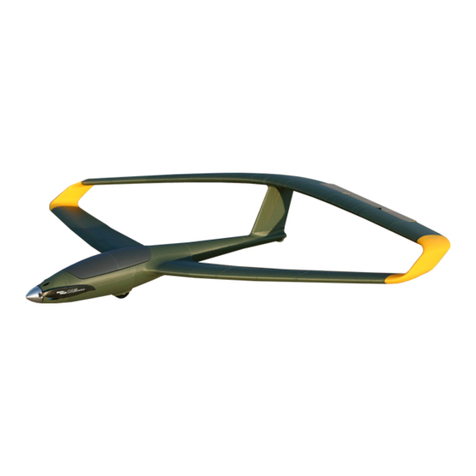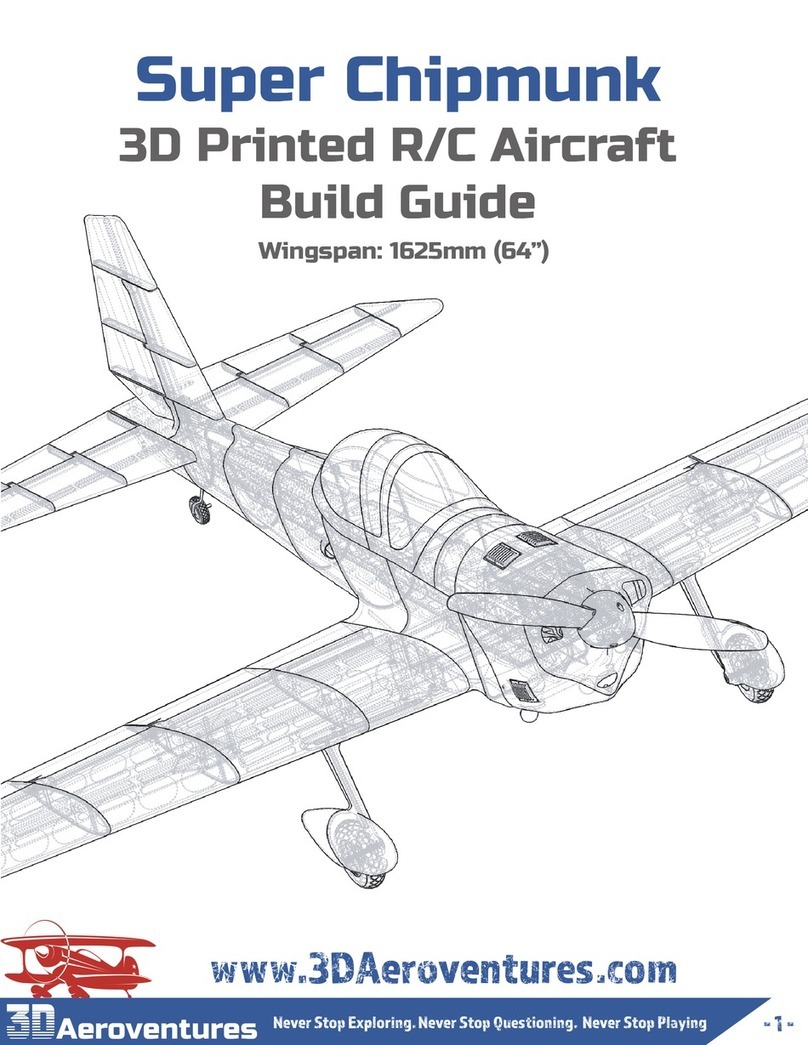
3DAeroventures
Included in Your Download:
1. STL Files
2. Simplify3D Factory Files (individual parts and grouped builds)
3. Starter Cura and PrusaSlicer settings (user refinement needed)
4. Generic Gcode for i3 style printers
5. PDF Build Guide
Please Read A Note from the Designer:
First of all, thank you so much for your interest and support of 3DAeroventures. I can’t tell
you how much joy I get out of designing and testing these aircraft, and the fact that you can
now get joy out of my creations just makes this calling that much more special. I dove into the
R/C aircraft hobby as a 12 year old kid with my dad and it’s a passion I’ve maintained into
adulthood. Part of 3DAeroventures mission is to encourage people to not let go of the thing
they were most passionate about growing up. That’s why our motto is “Never Stop Exploring.
Never Stop Questioning. Never Stop Playing.” I hope the building and flying of this model
keeps your passion for model aviation ignited. More importantly, I encourage you to share
your build and flying process with young people, hopefully igniting a fire in them and helping
to maintain and grow this wonderful hobby.
Now onto the technical stuff. I recommend printing the Micro SportCam in ColorFabb LW-PLA.
The reduced weight of this material improves its flight performance significantly, particularly
giving it gentler flight characteristics on landing. The biggest complaint I hear about LW-PLA
is that it is expensive at about $50 for 750g. At first glance this does sound expensive, but you
must realize that LW-PLA is printed at an extrusion multiplier (flow) of between 0.35 - 0.4 so a whole
reel will last significantly longer than Standard PLA. One reel of LW-PLA will last as long as
about 2 reels of standard PLA. However, I understand that LW-PLA isn’t for everyone. So I have
provided seperate design files for a standard PLA version of the Micro SportCam. The standard
PLA version uses the same motor setup but you may need to experiment with a larger 2S or a 3S
battery to get the aircraft to balance properly. I had good results using a 650 mah 3S Lipo in the
standard PLA version.
I’d love to hear about your build and flight experience with this aircraft. You may contact me
directly at eric@3daeroventures.com with any feedback or troubleshooting questions. Or post
your experiences on the 3DAeroventures Pilots Alliance Facebook Group.
Thanks again and enjoy your flight!
Eric Haddad
Pilot in Command
https://www.facebook.com/groups/3daeroventurespilots
mailto: eric@3daeroventures.com





























